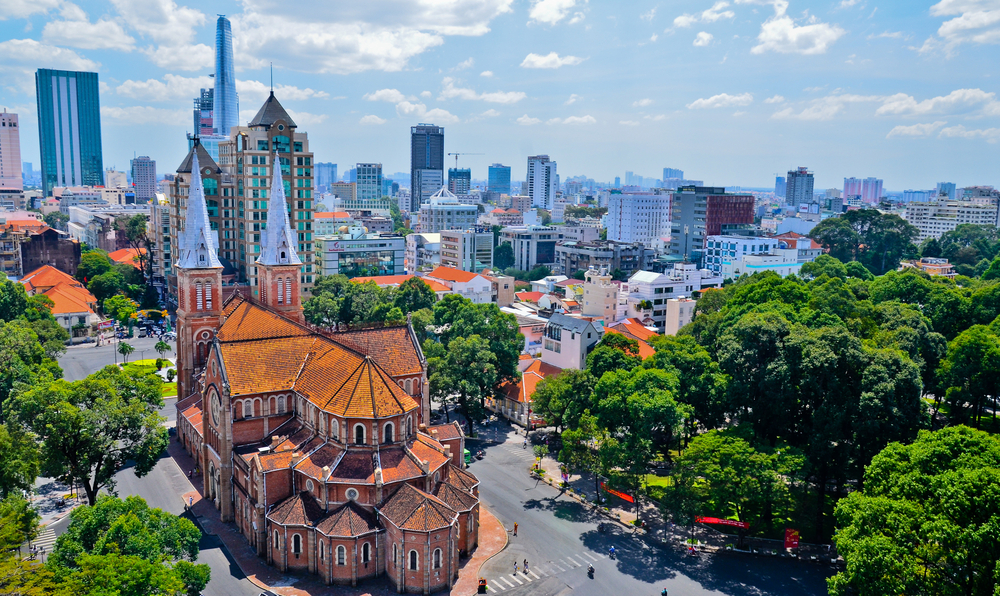Vietnam transitions to a more transparent property market amid sweeping reforms
With sentiment cautious amid a struggling economy and far-reaching reform of its property sector, Vietnam segues into an era of economic reckoning and transformative real estate policies

Having grown its GDP by eight percent in 2022, Vietnam was the quickest Southeast Asian economy to recover from the pandemic-induced global downturn.
Beneath that veneer of progress, however, was an undercurrent of rising interest rates, tightened credit, and legal uncertainties. The economy entered the first quarter of 2023 with an annual growth rate of 3.32 percent, close to its lowest in 13 years.
With the dong weakened and inflation risks heightened, the State Bank of Vietnam (SBV) towards the end of last year increased its policy rates by 100 basis points—twice—to six percent.
Vietnam is in a period of transition following the global easing of Covid-19 restrictions. While resurgent consumer spending and rising tourism resulted in bonanzas for the retail and hospitality property segments, respectively, the residential sector did not seem as propitious.
“With sentiment cautious among developers, homebuyers, and investors, there has been a drop in new supply as most developers will ‘wait and see’ before either launching their remaining stock or implementing new projects,” says Hang Dang, managing director of the consultancy CBRE Vietnam.
Long a means for local developers to raise capital, the issuance of bonds faltered over the last year as the government sought to inject transparency into the regulatory framework. Developers were forced to get creative, working with foreign investors, leasing financial assets, or reaching out to investment funds.
The government has recently announced new policies removing short-term corporate bond burden and allowing credit institutions to help with bond difficulties. More gripping, however, is a mooted raft of amendments to the 2013 Land Law, due to be finalised this year.
With sentiment cautious among developers, homebuyers, and investors, there has been a drop in new supply as most developers will ‘wait and see’ before either launching their remaining stock or implementing new projects
The draft of the Amended Land Law proposes, among others, that the annual land rental be the default form of land use rights. Upfront rental payment, in contrast, will apply mostly to lands related to agriculture, forestry, aquaculture, saltmaking, industrial zones and clusters, processing zones, and hi-tech zones.

“Depending on how that is conducted, that could make some property developers a little bit nervous because it creates a bit more immediate uncertainty regarding the value that they’re going to have to pay on an annual basis,” says Paul Volodarsky, partner and head of regional real estate practice at the firm DFDL Legal and Tax. “The alternative is that it may result in developers wanting to do more lump sum payments to the government for the land use rights.”
The amendments could imperil new commercial developments and incentivised projects such as those in power and hospitality, according to Hang.
“To make the real estate market healthier and more sustainable, the Land Law needs to include solutions to address some of the problems that market participants must face, such as the land use right ownership tenure, the classification of the land, and the appropriate method to value land,” says Hang.
For years, the Vietnamese real estate market has had to navigate a variety of contradictory regulations and convoluted rules. But nothing roils the housing market like the land price bracket, which sets the ceiling and floor price for various categories of land every five years. The tool tends to open a Pandora’s box of disputes, corruption, and price disturbances.
The Amended Land Law proposes to abrogate the land price bracket. Under the new law, the local government can set land prices based on market fluctuations, to be published in a yearly table and updated as necessary.
“Removing the land price bracket will speed up the process of land compensation and building new projects and create a basis for full tax calculation,” says Hang.
“The valuation method should match the fair value determined by the market factors rather than the land price bracket method used by the government,” she adds.
In other moves, the government is making efforts to stabilise the lending interest rate. As of March, the SBV lowered its benchmark refinancing rate to 5.5 percent, down by 50 basis points. Although this could translate into improvements in the housing market, homebuyers and investors in Vietnam tend to hold back large-scale investment in the face of financial risks.
Fortunately, the economy continues to synergise with the nation’s industrial output, stoked by improving infrastructure networks and solid demand from manufacturers like Apple, Quanta, Samsung, and LG. Vietnam remains a beneficiary of the China Plus One strategy encouraging companies to diversify their businesses from its northern neighbour.

In the final quarter of 2022, average occupancy rates of industrial properties hit 83 and 90 percent in tier-one markets of the northern and southern regions, respectively, according to CBRE Vietnam data. In the north, the average rental rate for industrial land reached USD120 per square metre, an increase of 11 percent from 2021. In the south, the average rate increased by eight to 13 percent year-on-year, reaching USD166 per sqm.
The robust demand could fuel rental prices in tier-one markets to soar by up to 10 percent this year. Most tellingly, Ho Chi Minh City (HCMC) ranked in the top three for the first time on CBRE’s 2023 Asia Pacific Investor Intention Survey, with Hanoi in the top 10.
But there are talks of overheating and deteriorating competitiveness. “If you’re looking at making sure that the manufacturing sector continues apace, you want to make sure that it’s still an attractive location to do that,” says Volodarsky. “If pricing gets too high, it makes other jurisdictions look more interesting.”
Residential projects with proximity to industrial parks have attracted demand from local workers as well as expatriates, reports CBRE Vietnam. In Binh Duong province, home to dozens of industrial parks, including a USD1.3-billion factory for Lego, the affordable housing sector accounted for up to 45 percent of the quarterly new supply.
The government’s new VND120-trillion (USD5.1 billion) credit package is expected to increase social and worker housing projects in provinces packed with industrial zones.
In a recent survey by the property portal Batdongsan.com.vn, 68 percent of respondents stated that they planned to buy property over the next year. Newly developed properties in the price range of VND2.5-5 billion garnered attention in particular.

The buying sentiment for the luxury and ultra-luxury condominiums in HCMC has been gloomy in comparison, with no new supply coming into the segments in Q1 2023, according to CBRE Vietnam. The last two new launches in these segments in Hanoi were recorded in Q4 2021 and Q1 2022. Similarly, no new affordable condominium supply has entered the HCMC and Hanoi markets since 2019 and Q1 2021, respectively.
“The general condominium market across all segments has been negatively impacted by the economic hardship,” remarks Hang.
Still, CBRE forecasts 10,000 units in new condominium launches this year in HCMC, with Hanoi due for 15,000 units. A reversal signal could arrive in Q4 2023 or Q2 2024, predicts Batdongsan.com.vn.
“The recovery of the market is expected to take place faster if the government’s policies issued to support the real estate market penetrate more quickly and have a positive impact on market stakeholders,” says Dinh Minh Tuan, southern regional director of Batdongsan.com.vn.
For perspective, consumption power usually stays low in the first few months of a new year. Investors could be missing the big picture framing one of Asia’s most powerful manufacturing dynamos.
“You look at the growth of Vietnam on an annual basis and you say, ‘This is an economy that I want to be a part of,’” says Volodarsky.
This article was originally published on asiarealestatesummit.com. Write to our editors at [email protected].
Recommended
Why everyone is moving to Selangor and Johor: Malaysia’s real estate comeback
Malaysia’s upturn in fortunes is especially prevalent in secondary destinations such as Selangor and Johor
Penang’s silicon boom: How the US-China tech war is supercharging local real estate
Penang’s booming semiconductor industry has created ripples within the local real estate sector
New leader, new opportunities: How Hun Manet is shaking up Cambodia’s real estate game
Hun Manet is overseeing decent economic growth and widening access to the country’s real estate market for foreigners
Singapore embraces inclusive housing reforms amid resilient demand
The Lion City’s regulatory strength continues to exert appeal for international investors








